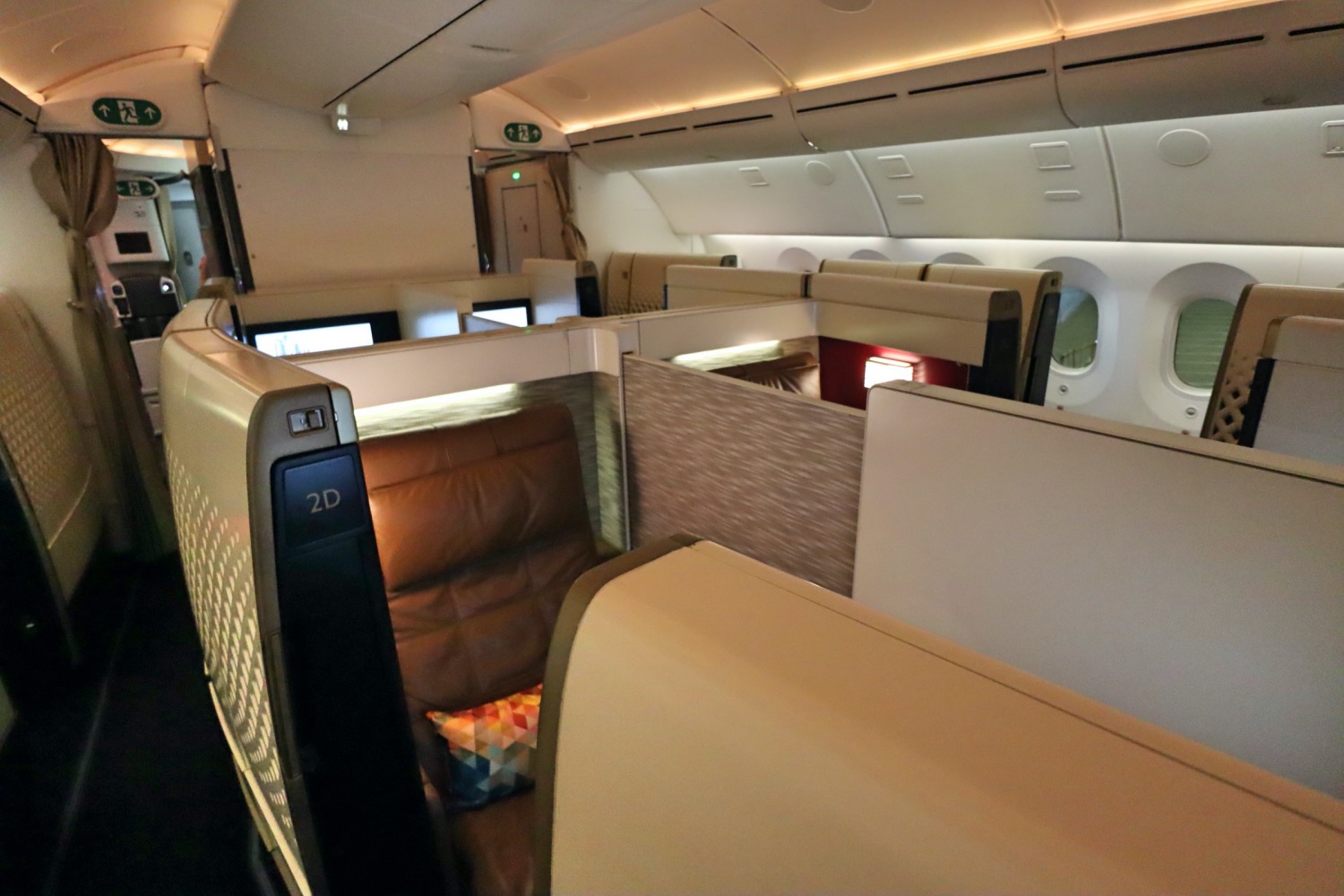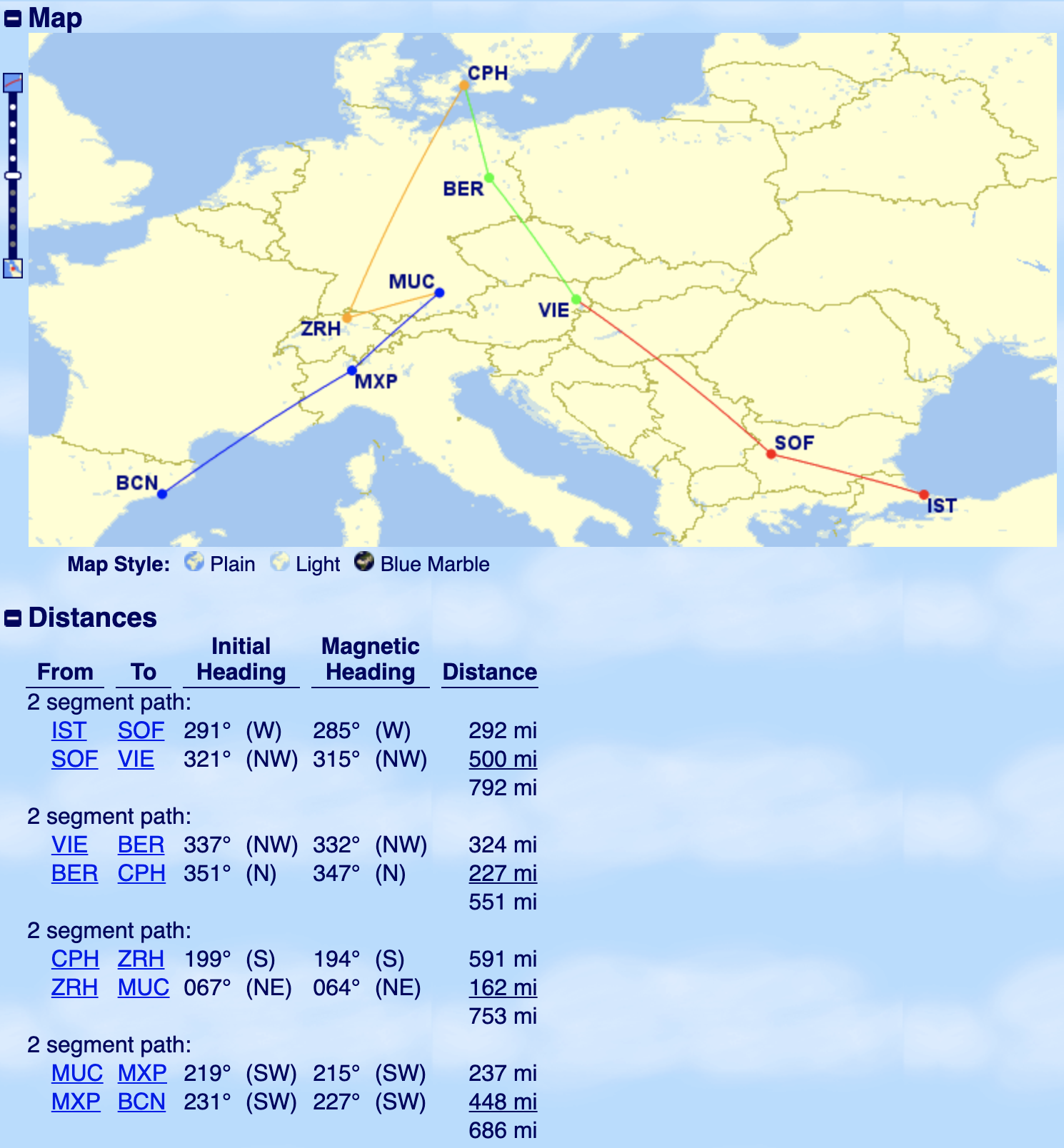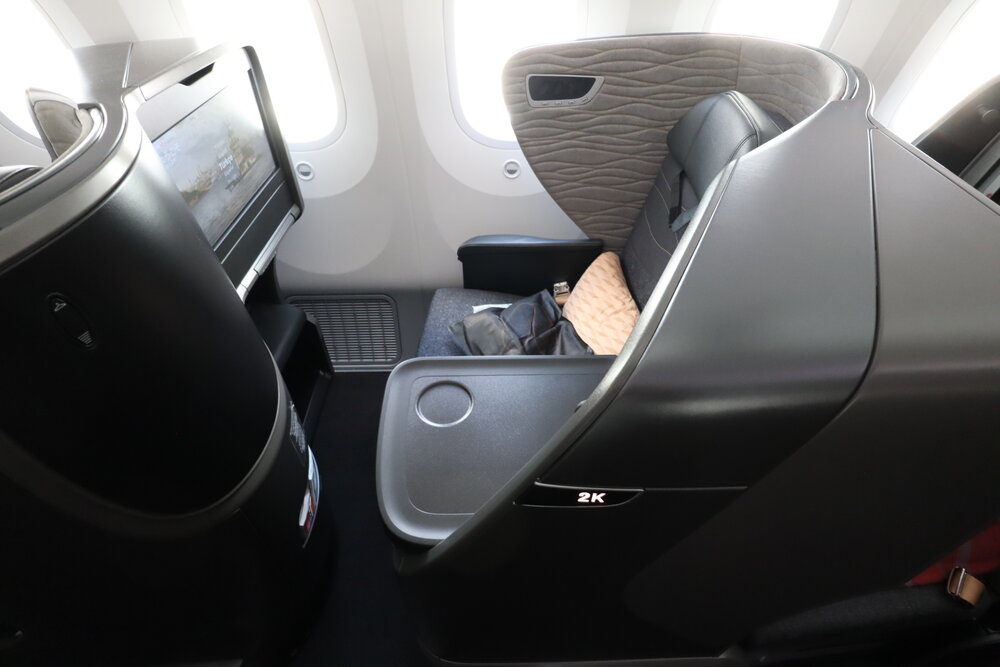The new Chase Aeroplan Card, announced today, has introduced a unique new feature as part of its signup bonus. Instead of Aeroplan points, you’ll earn two Welcome Flight Reward Certificates.
Each certificate is worth up to 50,000 Aeroplan points, for an impressive total of 100,000 Aeroplan points. Let’s explore the nuances of this new rewards mechanism and how you can maximize the value of your Welcome Flight Reward Certificates.

All About Welcome Flight Reward Certificates
Welcome Flight Reward Certificates can be used in the place of points, or combined with points, to book an Aeroplan award flight. They’re equivalent to points, but they aren’t exactly the same as points.
Instead, they function as a “voucher”. When you use a certificate, think of it as a discount on your points redemption. Each certificate from the Chase Aeroplan Card can be used for a discount of up to 50,000 points.
If your redemption costs more than the maximum value of the certificate, you’ll simply pay the difference in points. If it costs less, the Welcome Flight Reward will be considered used entirely, and you can’t use the leftover value later.
You can also only use one Welcome Flight Reward per reservation, per passenger. This introduces some limitations to the ways you can use them.
First, you can only use one certificate on a single-passenger ticket, no matter the cost.
For example, if you’re booking Washington–Abu Dhabi one-way on Etihad Airways First Class for 120,000 Aeroplan points, you could apply one certificate worth 50,000 points and pay the remaining 70,000 points.

Welcome Flight Rewards also can’t be shared between multiple passengers.
Let’s say you booked two seats for Toronto–Los Angeles round-trip on Air Canada economy class, for a total of 50,000 Aeroplan points. You’d only be able to apply a certificate to one passenger, for a discount of 25,000 points, squandering the remaining value of 25,000 points and still having to pay 25,000 points out of your account for the second passenger.
However, you can indeed use the certificates for anyone. It doesn’t matter if the cardholder who earned them is travelling, or if the Welcome Flight Reward is being applied to another passenger.
These certificates won’t expire as long as the credit card that earned them remains open and in good standing. Therefore, if you can’t find a way to use them for maximum value in the immediate future, there’s no rush, and no harm in holding them until a better redemption opportunity arises.
Best Ways to Use Welcome Flight Reward Certificates
In spite of the limitations above, there’s no reason why you shouldn’t be able to get full value for your Welcome Flight Reward Certificates and redeem them for no less than 50,000 Aeroplan points.
Optimize for Long-Haul Premium Flights
For the solo long-haul traveller, consider splitting your ticket into multiple reservations.
For example, if you’re flying New York–Zurich on Swiss business class round-trip for 120,000 Aeroplan points, you could instead book two one-ways for 60,000 points each.
That way, you’d be able to use two Welcome Flight Reward Certificates plus 20,000 points, rather than one certificate plus 70,000 points.

As Aeroplan prices all flights based on one-way bounds, one-way tickets cost half the points of round-trip tickets, so there’s no points disadvantage to booking this way.
However, if you’re making an award redemption on any airline except for Air Canada, you’ll have to pay a $39 (CAD) partner booking fee for each reservation – so you’d be dinged twice this way. That’s the trade-off for being able to use two Welcome Flight Rewards on a “round-trip” journey.
Those who travel in pairs can use one certificate per passenger. This would be advantageous as long as the price of each ticket is high enough.
As mentioned above, you wouldn’t want to do this for cheap redemptions like Toronto–Los Angeles in economy class. Instead, if you’re booking two passengers New York–Zurich on Swiss business class one-way for 60,000 Aeroplan points per person, you could apply a Welcome Flight Reward to both passengers to cover 50,000 points each, and only pay 20,000 points in total.
Book Multi-Stop Short Hops
For the intrepid vagabonds among us, you can squeeze value out of a Welcome Flight Reward on a backpacking-style itinerary.
Here’s a sample of what you can do with a single 50,000-point voucher for an extended trip through Europe, capitalizing on the sub-1,000-mile pricing band for incessant short hops:
- Istanbul–Sofia–Vienna: 7,500 points in economy class + 5,000 points for a stopover (Turkish Airlines and Austrian Airlines)
- Vienna–Berlin–Copenhagen: 7,500 points in economy class + 5,000 points for a stopover (Austrian Airlines and SAS)
- Copenhagen–Zurich–Munich: 7,500 points in economy class + 5,000 points for a stopover (Swiss)
- Munich–Milan–Barcelona: 7,500 points in economy class + 5,000 points for a stopover (Lufthansa and Singapore Airlines)

Try Out a Premium Cabin
When all else fails, this could also be a great chance to taste business class for a trip you were otherwise happy to do in economy.
Air Canada Signature Class is a great way to fly on transcontinental within North America, so if you intended to use a Welcome Flight Reward on Los Angeles–Toronto round-trip in economy for 25,000 points, you may as well book business class for the full 50,000-point value of the voucher instead.
You can also opt for premium economy seats, another solid choice for transborder routes.
There’s really no bad use for Welcome Flight Rewards, as long as your redemption exceeds the maximum points value per passenger.
Welcome Flight Reward Certificates vs. Aeroplan Points
Because Welcome Flight Rewards are equivalent to Aeroplan points, they can be used for all the same things, including flights on Air Canada and over 40 partner airlines.
Strictly speaking, Aeroplan points are more flexible than Aeroplan’s Welcome Flight Reward Certificates. You can use as many or as few points as you need, in any permutation imaginable: multiple bounds, multiple passengers, you name it.
While the certificates have an equivalent points value, in almost all cases you’ll either need to top up your certificate booking with points, or leave value on the table.
Therefore, instead of using a certificate for less than face value, I’d always recommend supplementing your certificate redemptions with Aeroplan points.

This means you’ll likely need an additional source of Aeroplan points, beyond just using the Chase Aeroplan Card for everyday spending. Fortunately, such earning opportunities are plentiful on both sides of the border.
In Canada, we have no shortage of co-branded and transferable credit cards, with no fewer than 20 credit cards which can funnel points into the Aeroplan program. That’s a downright enormous number of signup bonus opportunities, with plenty of ongoing and recurring promotions to capitalize on as well.
Meanwhile, the Chase Aeroplan Card is Aeroplan’s only co-branded credit card in the US. It grants up to 3 points per US dollar spent, 4,000–12,000 points for the spending required to unlock the welcome bonus, and 10,000 points if you joined the waitlist and apply before February 15, 2022.
However, as the rest of the welcome bonus is delivered in the form of Welcome Flight Reward Certificates, your points earnings will be capped, and you may at first struggle to top-up a 50,000-point voucher if you’re not already heavily engaged with the Aeroplan program.
Luckily, there are many other ways to earn Aeroplan points in the US. You can transfer points at a 1:1 ratio from Chase Ultimate Rewards, Amex US Membership Rewards, and Capital One miles.
That means that you can supercharge your Aeroplan points balance with huge welcome bonuses on cards like the Chase Sapphire Preferred, the Amex US Platinum Card, the Amex US Gold Card, the Amex US Green Card, or the Capital One Venture X Card, in case you find that earning the traditional way through everyday spending and mileage accrual on revenue fares is too slow for your redemption goals.
Will We See Welcome Flight Reward Certificates in Canada?
Based on what we’ve heard from Aeroplan executives, the Chase Aeroplan Card was designed to mirror many benefits of the Canadian Aeroplan cards, but with a few specific features that would be appropriate for the US market.
I suspect that Welcome Flight Rewards are one of those features – a footnote of the Aeroplan program rather than a foundational piece.
Aeroplan’s research has shown that Welcome Flight Rewards create more urgency to redeem compared to simply a welcome bonus of points. As they tap into a new demographic of travellers who haven’t traditionally booked with Air Canada, this is a good way to get Americans excited about their northern neighbour’s national carrier.
I imagine most American travellers don’t have a huge balance of Aeroplan points, with so many other loyalty program options at their disposal.
I wouldn’t be surprised if many US consumers take their Welcome Flight Rewards as a quick win in the form of “free travel”, but are unable to top them up immediately for a grand redemption.
It’s a great way for Chase and Aeroplan to advertise and deliver on a six-figure welcome bonus in the US, while anticipating that not all cardholders will use its full value.

However, I’m not personally expecting to see Welcome Flight Rewards being introduced on Canadian credit cards any time soon.
Certificates are inherently more limited compared to points, and I don’t think they’d be well-received in a market where Aeroplan points are already plentiful and preferred.
Anything is possible, though, and Aeroplan has shown themselves to be nothing if not eager to innovate and experiment. If the Welcome Flight Rewards do come north, I’m confident that I’ll have no trouble topping them up with my abundant Aeroplan stash!
Conclusion
In spite of their limitations, Aeroplan’s new Welcome Flight Reward Certificates on the Chase Aeroplan Card are indisputably valuable. Given the sheer value of the certificates against an extremely reasonable US$95 annual fee, I think this is an acceptable trade-off to work around.
I’d encourage you to hold the Welcome Flight Rewards for a redemption where you’ll use their full value, as they’ll never expire as long as you remain a Chase Aeroplan cardholder.
However, I’d also recommend using them at your earliest convenience and be done with the hassle, as they have no advantage over the flexibility of points – there’s no benefit to saving these certificates longer than necessary.
Either way, savvy award travellers on both sides of the border should have no trouble collecting Aeroplan points from other sources, ensuring that they’ll always be able to top-up your certificates for a bigger prize, and never use them for a redemption under 50,000 Aeroplan points.




















Can you apply the certificate to an exiting reservation?
Have any details been released on what happens when you cancel a flight that was purchased with one of the certificates? Would the original certificate be returned into the account? Would some other instrument be used as a refund?
How do the certificates work with family sharing?
I was wondering this myself – if, say, you want to book from your main account with elite status, but there are certificates attached to a pooled account from the pooled member’s Chase card. I imagine you can’t transfer them or book them on behalf of someone in your pool, but I’ll try to confirm this. Otherwise, you can use them for any passenger, so Family Sharing is irrelevant in that case.